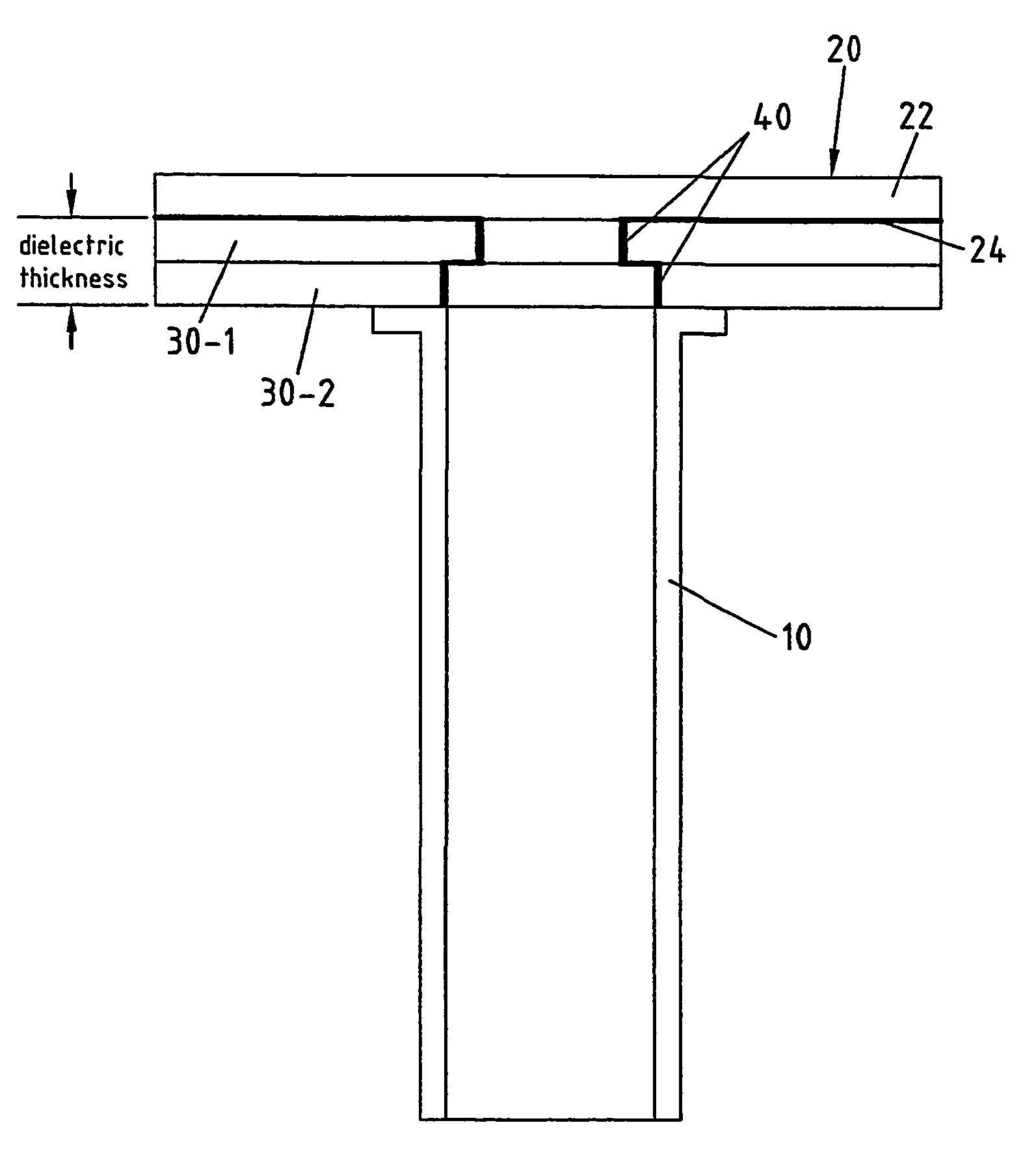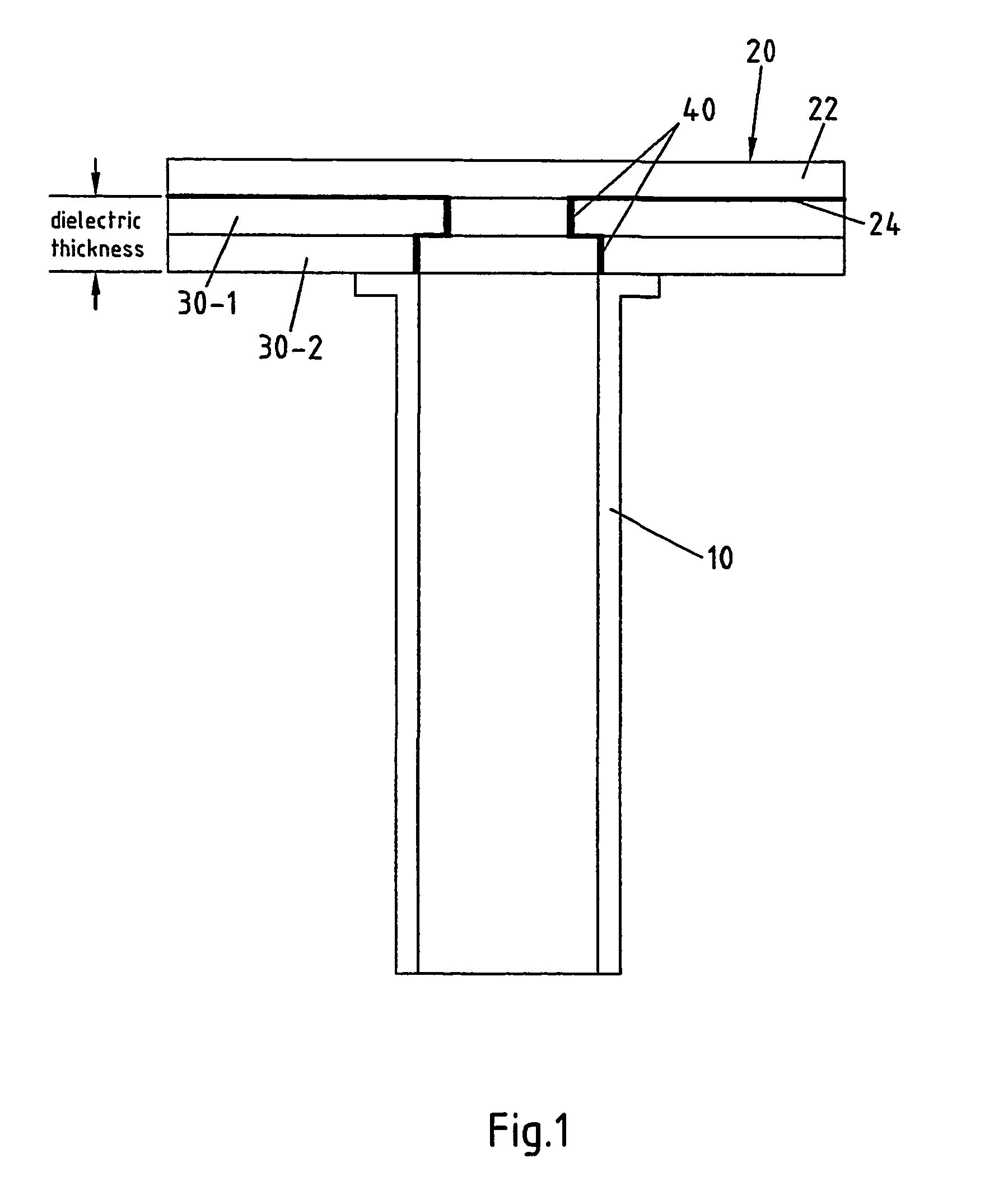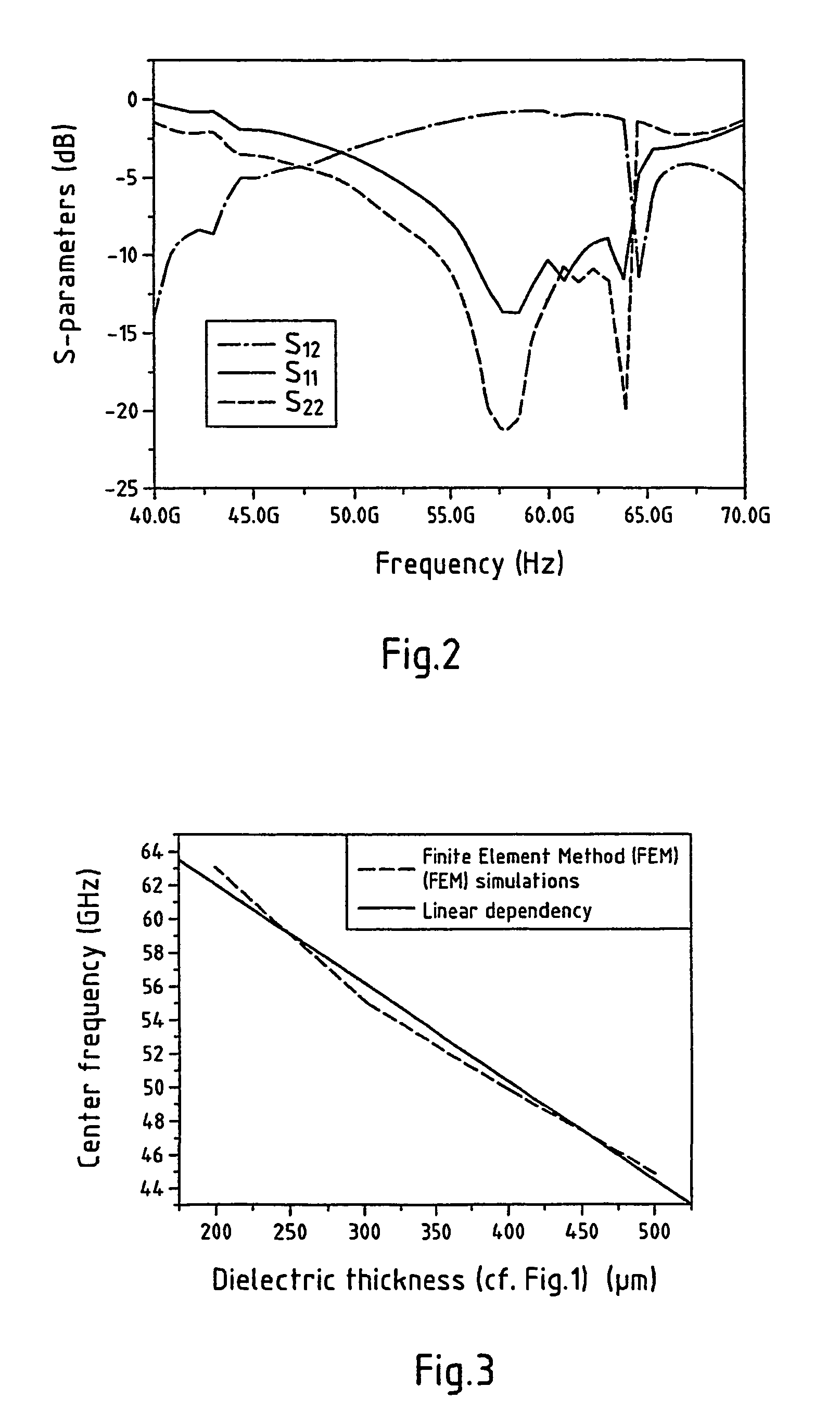Waveguide to stripline transition with via forming an impedance matching fence
a waveguide and stripline transition technology, applied in the direction of coupling devices, multiple-port networks, electrical devices, etc., can solve the problems of increasing the complexity of the structure, and achieve the effect of facilitating the manufacturing process and being less expensiv
- Summary
- Abstract
- Description
- Claims
- Application Information
AI Technical Summary
Benefits of technology
Problems solved by technology
Method used
Image
Examples
first embodiment
[0027]FIG. 1 shows a structure for guiding electromagnetic waves according to the invention. The structure comprises a wave guide 10 and a transmission line 20, the substrate layer 22 of which is arranged perpendicular to the longitudinal axis of the wave guide 10 for transition of electromagnetic waves from the wave guide 10 to the transmission line 20. There are two layers 30-1 and 30-2 provided as coupling means, the layers 30-1, 30-2 being arranged between the substrate layer 22 of the transmission line 20 and the wave guide 10, wherein the dielectric thickness of the layers 30-1, 30-2 is adjusted in a way described below.
[0028]Each of the layers 30-1, 30-2 comprises metallised through-holes 40, called “vias”, forming a fence-like structure surrounding the area of each layer 30-1, 30-2, respectively, through which the wave should be guided. Vias of different layers are interconnected with each other and with a metallised layer 24 at the bottom side of the substrate layer 22 of t...
second embodiment
[0035]FIG. 5 shows a structure according to the present invention in which three layers, 30-1, 30-2, 30-3, between the substrate 22 of the transmission line 20 and the wave guide 10 comprises vias 40. Quite often it is sufficient to optimise just only the dimensions of the layer 30-1 directly beneath the micro strip ground plane 24 and to keep elsewhere in the substrate the dimensions equal to the cross-sectional area of the metal wave guide 10. In general it appears that the larger the dimensions of the wave guide continuation structure in the dielectric substrate of the layers 30-1, 30-2, 30-3 and the transmission line 20, the smaller the insertion loss.
[0036]According to the present invention the preferred material for the dielectrical layers is low or high temperature co-fired ceramic LTCC or HTCC.
[0037]The process for manufacturing said layers comprising vias is illustrated in FIG. 6. In a first step S1, the substrate is generated by mixing solvents, ceramic powder and plastic ...
third embodiment
[0038]FIG. 7 shows a third embodiment for a structure for guiding electromagnetic waves according to the present invention. It substantially corresponds to the structure shown in FIG. 5 however, the implementation of the vias in the layers is shown in more detail and layers 30-4, 30-5, 30-6, and 30-7 are additionally comprised within the structure.
[0039]Whereas in FIG. 5 all layers 30-1, . . . 30-3 have the same thickness, the thickness of layer 30-2 in FIG. 7 has been varied in order to achieve good impedance matching. For example, for achieving good impedance matching at a particular frequency of 60 GHz it has been found that the appropriate thickness of layers 30-1 and 30-4 to 30-7 shall be 100 μm, whereas the thickness of layer 30-2 is proposed to be 150 μm.
[0040]The vias in the dielectric substrate layers do not only influence the impedance matching but also have an important roll in the mechanical design of the structure because they preferably connect the ground planes 24, 31...
PUM
 Login to View More
Login to View More Abstract
Description
Claims
Application Information
 Login to View More
Login to View More - R&D
- Intellectual Property
- Life Sciences
- Materials
- Tech Scout
- Unparalleled Data Quality
- Higher Quality Content
- 60% Fewer Hallucinations
Browse by: Latest US Patents, China's latest patents, Technical Efficacy Thesaurus, Application Domain, Technology Topic, Popular Technical Reports.
© 2025 PatSnap. All rights reserved.Legal|Privacy policy|Modern Slavery Act Transparency Statement|Sitemap|About US| Contact US: help@patsnap.com



